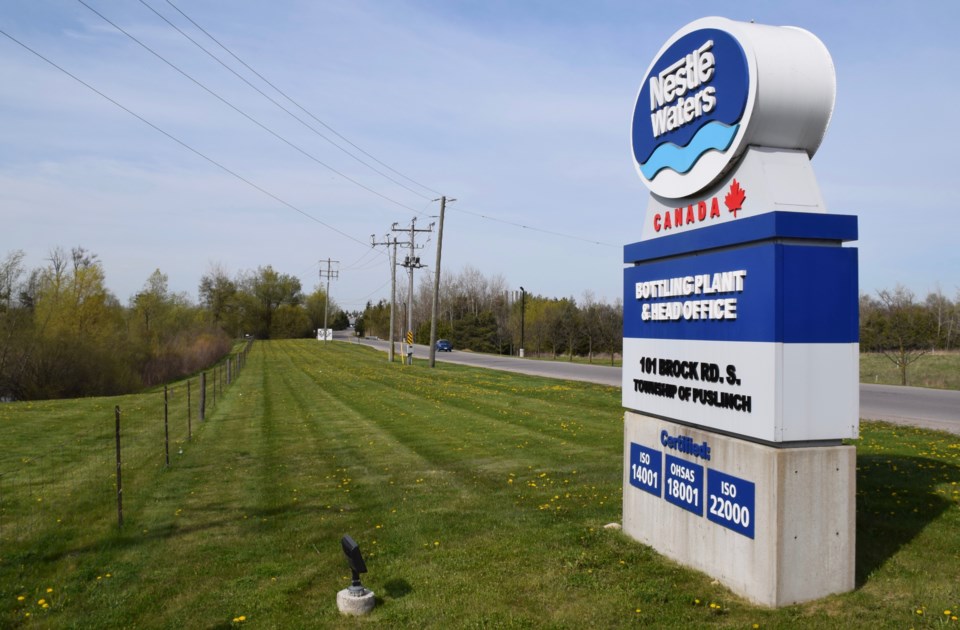A number of people have been asking on social media whether Nestlé Waters Canada has reduced its water pumping levels during this dry season.
This week, Cédric Focking Schneider, the company’s corporate affairs manager, said the company is committed to drawing at a level under 80 percent of its permitted limit.
He said volumes of water withdraw from the company’s wells in Aberfoyle fluctuate on the basis of “demand and the efficiency of our bottling facility.”
Under normal circumstances pumping levels can be near to the permitted limit, and at other times no where near the maximum, he said.
The permit limits are set by the Ministry of the Environment and Climate Change, “based on rigorous review of actual ground water conditions and in consideration of potential seasonal variation and conditions of stress such as drought,” he wrote in an email.
Under the Grand River Conservation Authority Level 2 water conservation advisory, Nestlé is “committed to limiting our monthly withdrawals to less than 80 percent of the permitted limit.”
The GRCA Level 2 advisory calls for a 20 percent voluntary reduction in water usage.
Focking Schneider said Nestlé Waters operates under strict ministry guidelines and “continuously monitors groundwater elevations to ensure there are no declining trends outside of natural seasonal variability.”
He said the company is committed to ensuring long-term water sustainability, and utilizes over 80 monitoring points at Aberfoyle in that effort.
He referred to a Grand River water management plan steering committee water use inventory report from five years ago (https://www.grandriver.ca/en/our-watershed/resources/Documents/WMP/Water_WMP_Report_WaterUse.pdf ), which contains a pie chart outlining the major water users in the Grand River watershed.
Of all the water drawn from the systems, municipalities are the largest users at just over 60 percent, agriculture is about 10.5 percent, and aggregate (stone and gravel) washing is 4.47 percent. Water bottling accounts for 0.60 percent, according to the chart.
